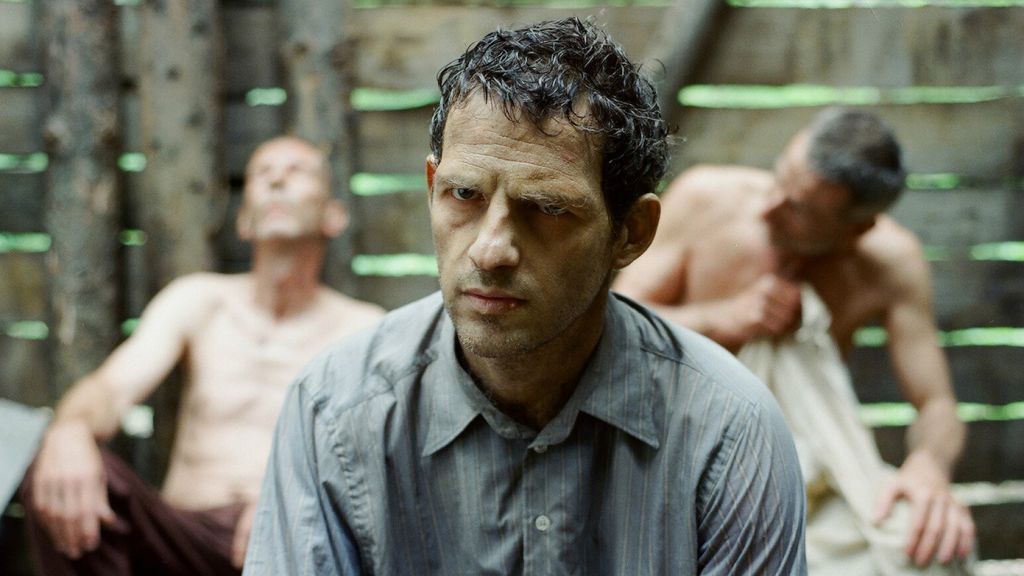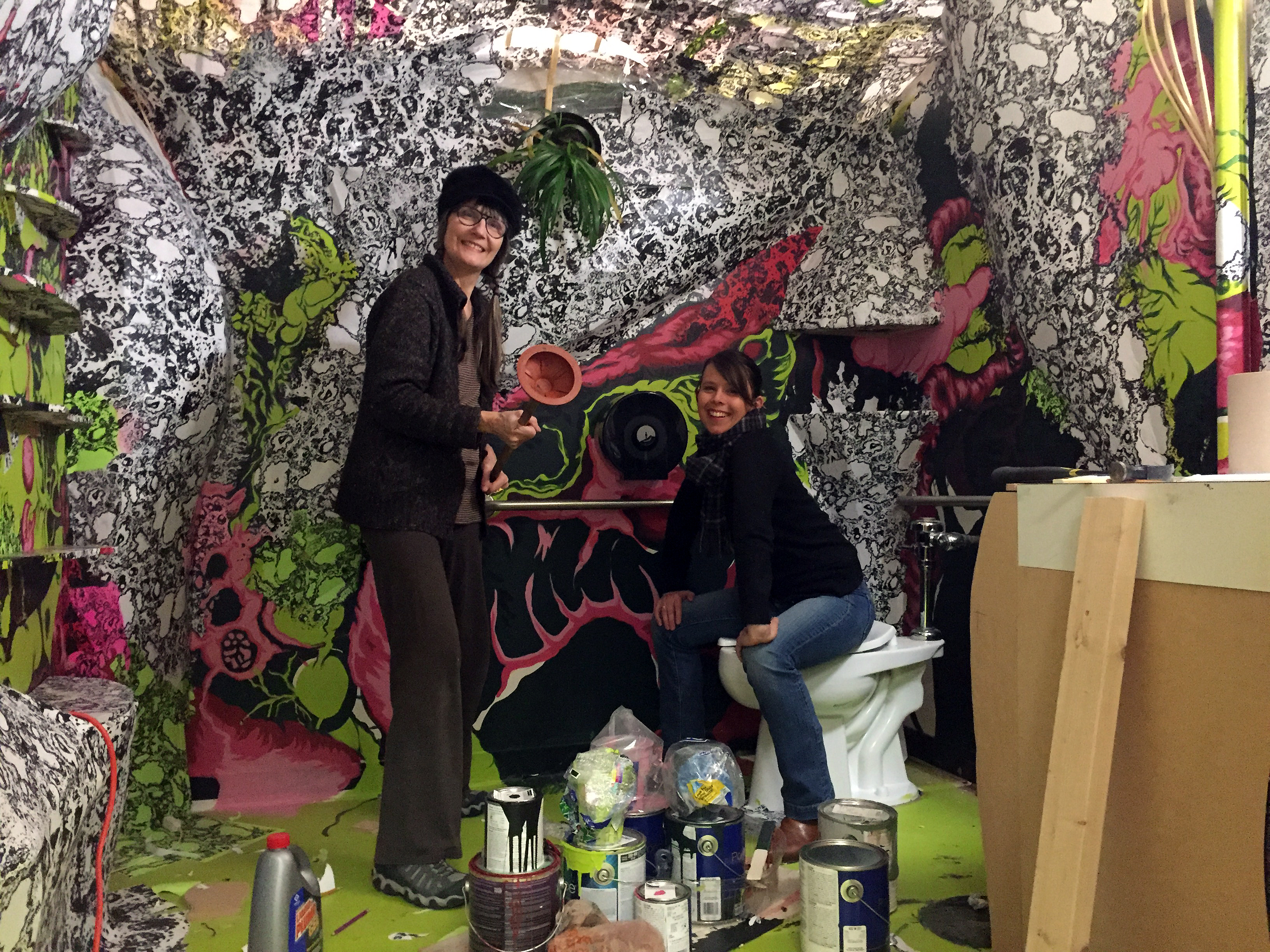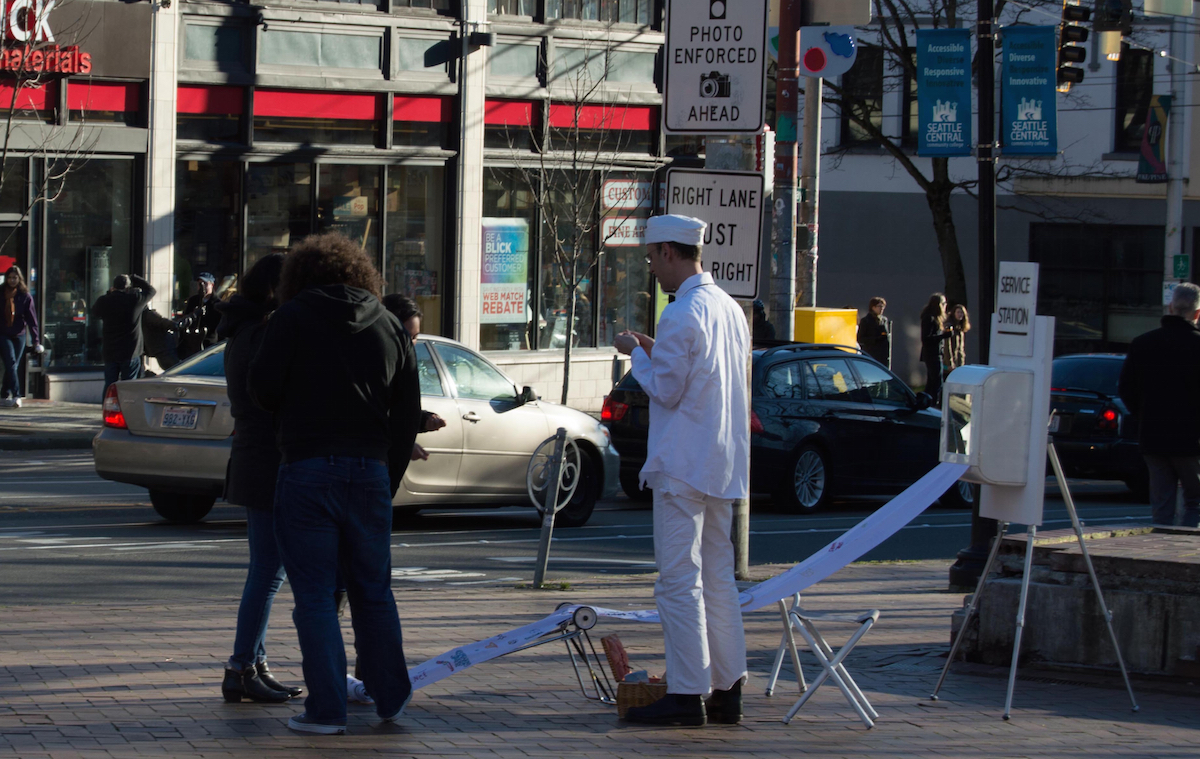William Chambers explores the art of participation, one hand towel at a time by Cara Ober
Whether embodying the destruction of the home in the “Obsessive Dollhouse”, rethinking dreams and urban decay in “Spaceship York”, or awakening imaginations in “The Optician”, William Chambers uses interactive installations to dissect complex social issues. His goal is to make the audience his partner on a journey of discovery using humor, personal narrative, and familiar domestic rituals.
The artist will be performing “Service Station,” a one-man interactive performance piece at AVAM on Saturday, Feb 6 from 10-2. He agreed to answer BmoreArt’s questions about his work and the performance.
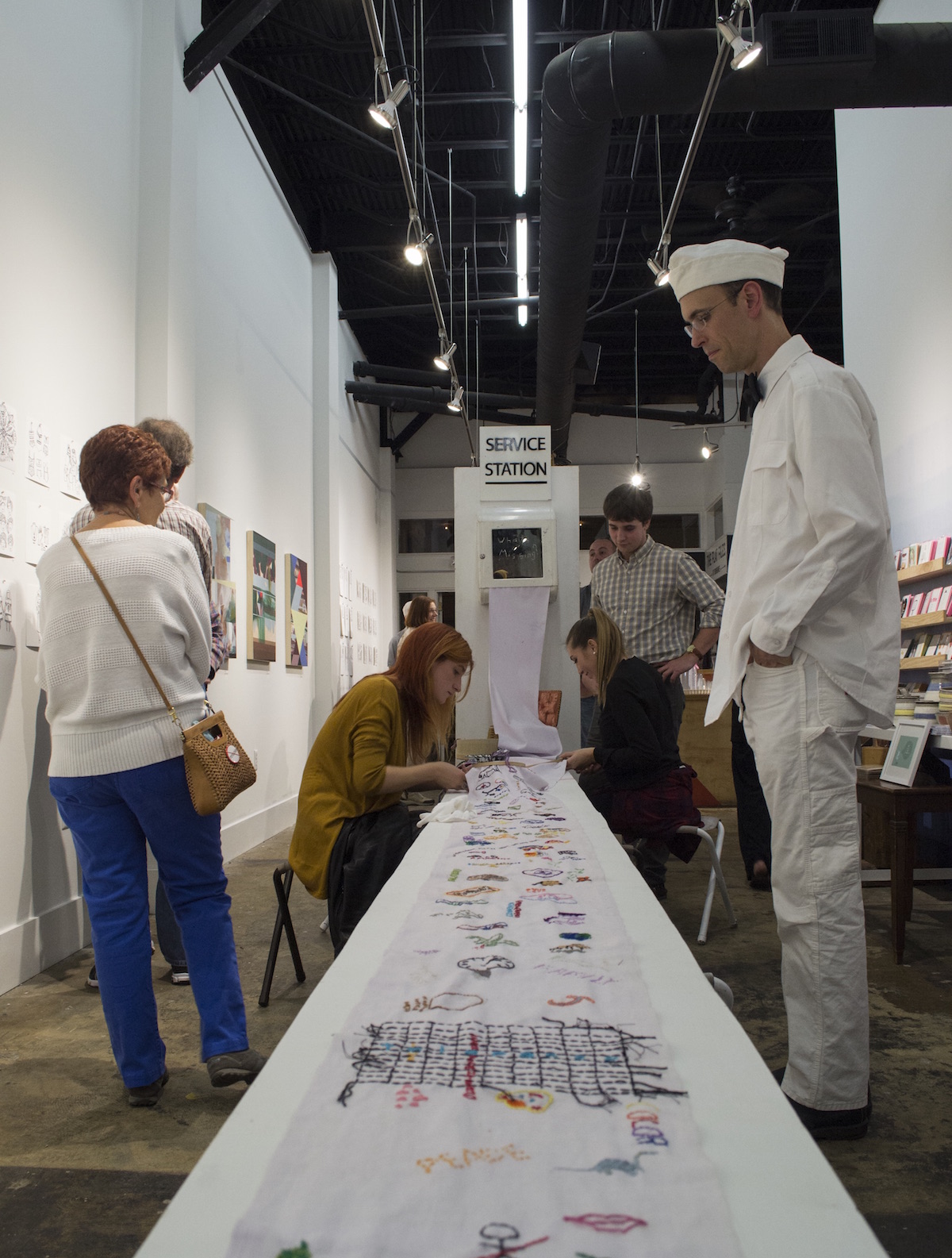
How did you come to work with this museum and how do you think the context of ‘outsider art’ impacts or benefits your work?
I came to work with AVAM by through a conversation with Beka Plum about whether “Service Station” could be a fit and how. I am trained as a sculptor and have always had a huge reverence for outsider art and artists. I am thinking of two of my favorites Clarence Schmidt and his amazing house that burned to the ground and Sam Rodia’s “Watt’s Tower”.
Many of these folks had the drive to reach for the unimaginable and I think as artists, we should try to channel a bit or a lot of that. Art is not about following the rules and doing what has been done before. I love the idea of straddling both, but I also realize that it is irrelevant in the end. When art is about helping people make change and seize a bit of their life power- the distinctions fall away.
How did you come to be a performance artist? Were you a practitioner of other media first or was performance your entry point into art? How is the medium of interactive performance the right medium for your ideas? How does it allow your ideas to be best expressed?
I am a maker of objects. At a certain point I realized ( I am not the first) that the power of art objects is (1) in the making of them and (2) in the stories we tell and attach to them (3) that using my body/self in the experience is much more effective when trying to reach out to more people. I am not so interested in medium, but more in how to connect with folks in order to have a shared conversation about what is most important. What Grant Kester calls “Dialogical Aesthetics”. I am hoping to engage participants in a shared experience.
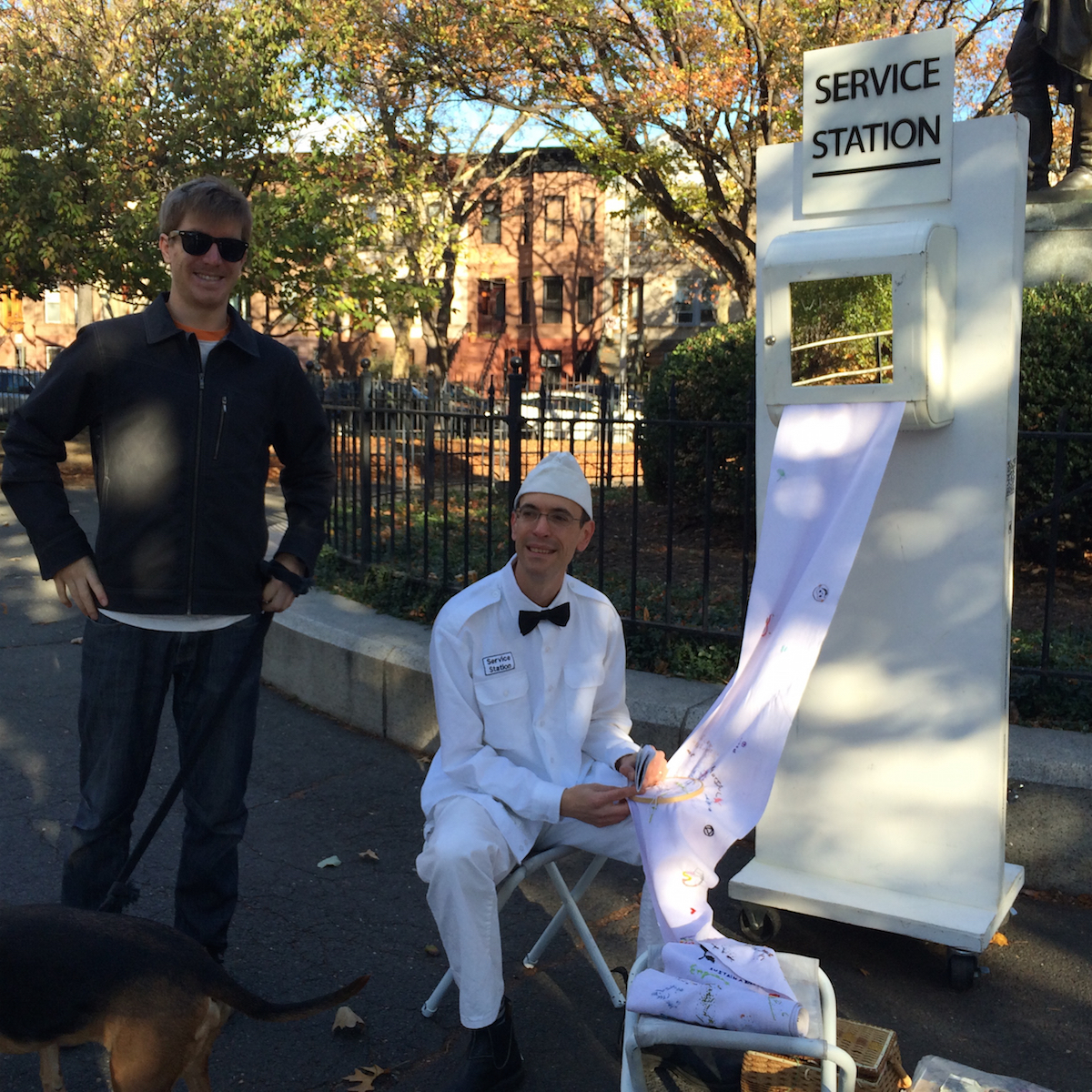
Can you talk about the ideas behind “Service Station”? Obviously, most people think the world could use some improving, or that something is missing and this unites all human beings. However, how did you come to combine this idea with a 1950’s aesthetic revolving around a washroom? Also, how does sewing tie in to your concept?
I see the 1950’s/1960’s as a sort of collision where the dream of modern life (industry/design/science) crashed into the horrors of human negligence and greed (Vietnam War, Racism, Poverty, etc…). We are clearly still dealing with that today. The “Service Station” towel holder is an excellent physical metaphor for this. As a child I remember them dirty and dragging on the floor of decrepit gas station restroom. How different from the dream of the automobile age, highways, and attendants to help you on your way. So, I want to channel a bit of that optimism and take something that would be trash and turn it into something beautiful.
I hope to make a piece of art with hundreds of people from all across the country and have a conversation about what is most important in the world. Our lives are so full of stuff and things that mean very little to us. It seems important to spend a quiet moment discerning what we care about. Will that lead to action? We will have to see. Sewing and embroidery are a sort of physical antidote to the harshness that we face- violence, indifference, the many isms. It is centering and transformative.
When it’s finished, “Service Station” offers physical evidence of the performance in a hand-embroidered, 40 foot long cloth. What do you do with these works of art? Do you see them as the byproduct of the performance or are they exhibited on their own terms?
I have called some of my other pieces “artifacts of performance”. They are sculpture really, and layered with this beautiful history of collective action. I am hoping for something more than performance and more than sculpture. I am comfortable with the scrolls being exhibited on their own. I cannot be everywhere at once, so I do a little of both. They can be picked up and continued at anytime.
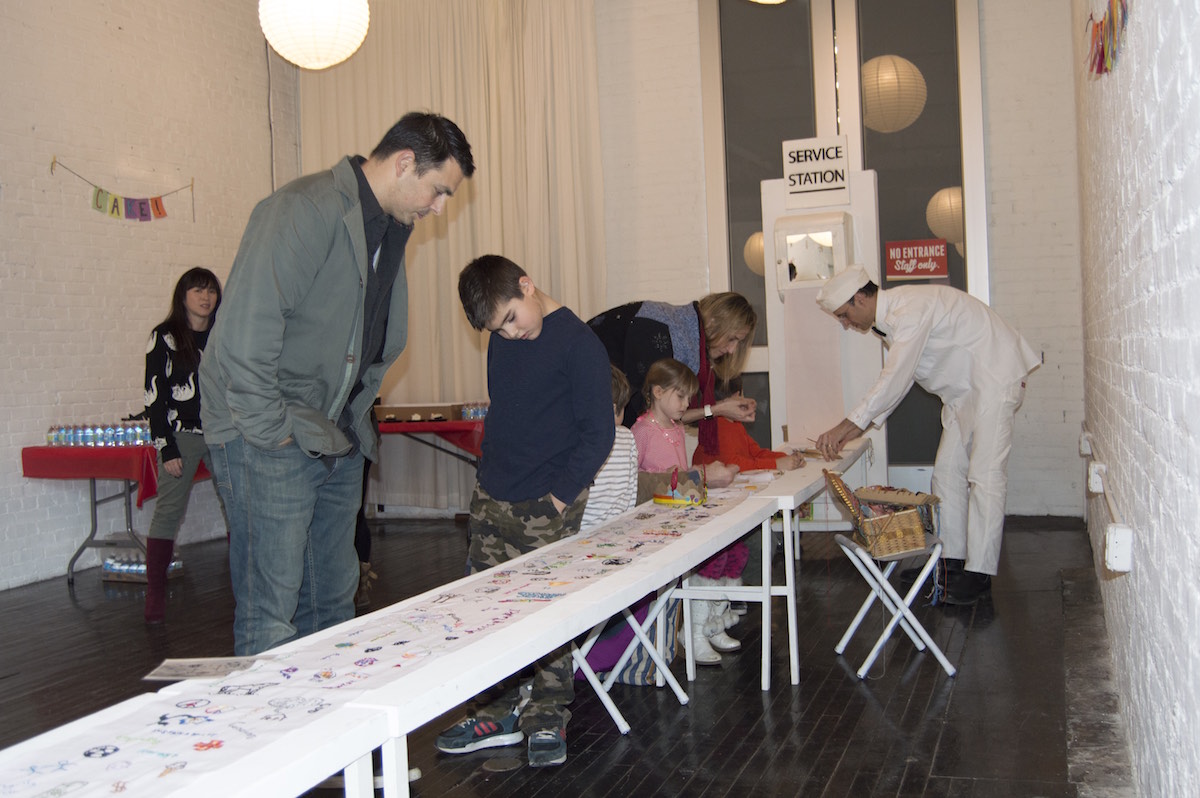
Can you talk about another project which seems appropriate to Baltimore: “Spaceship York”? In press about the project which was hosted for 2 months in an unleashed storefront in York, PA, you wanted to consider urban problems of inequity and segregation. Can you talk about the power of art in bringing different people together? What was the impact of this project on your community?
“Spaceship York” was a piece I did in York, PA last spring. It was a grant funded project building a spaceship in a storefront and collecting the dreams or visions for the world of participants to send into space. We had a launch at the end, of which a video exists. The piece was really about the artist being present over time in a community and offering a space to have a conversation.
Like many places York is on the cusp of uneasy gentrification. Issues of racism and inequity- of whose space the downtown is are present, but unspoken. The spaceship project was a way to open a conversation to everyone. Different times of day would get different groups. I certainly had business people, the art crowd, but also ex-prisoners, homeless people, tourists, and many others. One man came and talked about how the city had built benches with the artistic rollers in the middle of each to make him and others unwelcome. He could not lie down.
Many folks in York had a Baltimore connection and wrote dreams and hopes that came out of the violence and injustice after Freddie Gray’s murder. It was challenging to not be able to do anything, but just listen. And as the walls filled up with dreams (more than 300) the space was a witness to all of the participants lives. People would come in and read the dreams, admire them, and ponder. The goal of the piece was to build some empathy and compassion. For shared visions to be enjoyed and also the stark reality of people that do not have their basic needs met to be up there too. Everyone deserves a voice and to be listened to.
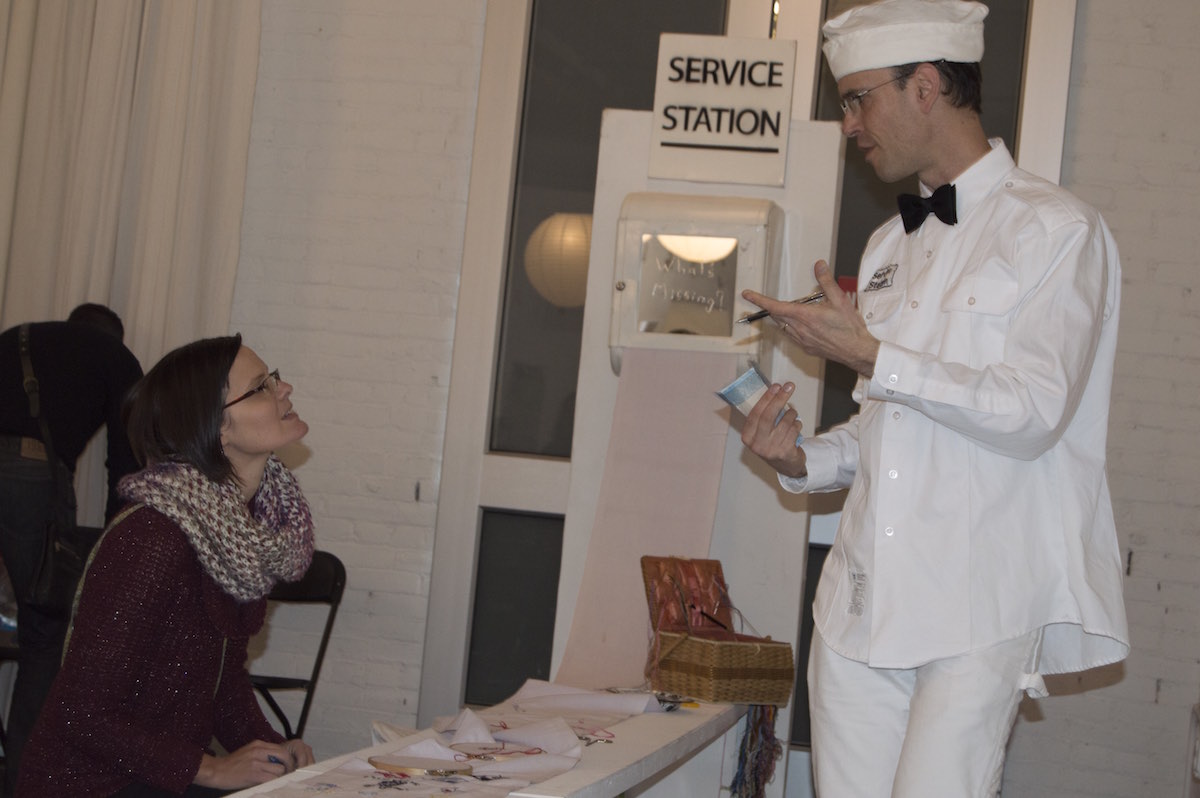
What can readers expect on Saturday from a trip to AVAM? Where can they find you in the museum?
At AVAM on Saturday the towel roller will be set up and the embroidered towel on three long tables. Participants will be welcome to decode previous symbols, answer the questions “What’s Missing?” in their lives and the world, and or embroider. I have lots of needles, many colors of thread, and am happy to teach what I know about how to stitch. It is also fine to record an answer in the book and have someone else do the stitching. The folks at the main desk will be able to point visitors to where I am set-up.
Thanks for chatting !
For more information, go to AVAM’s website: http://www.avam.org/news-and-events/events/service-station.shtml.
